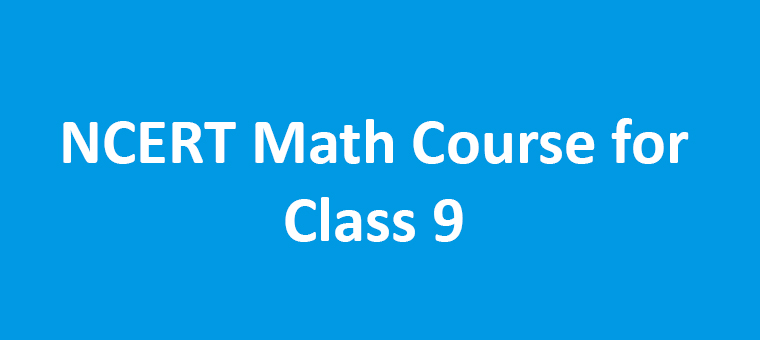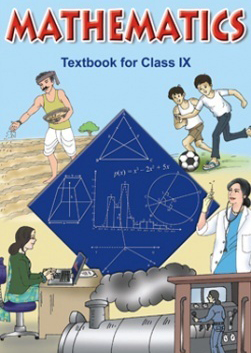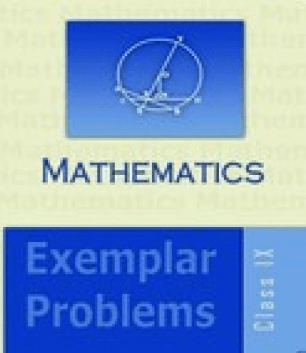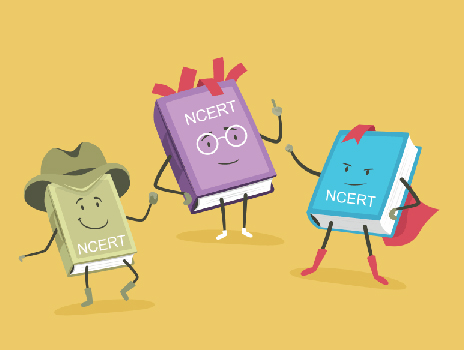NCERT 9th Maths Course and Tutorial
Posted by: Admin | 26 May 2020

Standard 9th is the turning point in the life of every student who aspires to achieve something in his life. His devotion to work and a healthy foundation is the basis which can pave his road to success. At this age, he has to decide upon his interest to choose what suits him the best and which will prove to be the best for his nearing future. This is that point of life when he has to show some seriousness because the next 4 years will be the most crucial years for deciding his future. Some may want a stream because of passion or to follow their dreams; some maybe because of family pressure for a particular direction and imitating their peers.
Whatever happens, whether it's out of interest or imposition, one has to pursue the best from it because it is the deciding factor for the future waiting for our arrival. We need to make our subjects strong so that we don't regret later that a little bit of extra effort might have proven useful.
In this article, I will be putting light on the subject, which is the basis of all without any stream distinction. The course loved by many, the one with the play of numbers that is. This is the subject which nurtures us from the very beginning of our school life and continues till ages.
Standard 9 Mathematics is quite the core for the students who are planning to pursue Engineering or any statistics field. Scoring good marks in the board exam may develop a great taste and foundation for this subject.
To achieve success in any exam, NCERT 9th Mathematics plays a vital role. All the concepts frequently asked in competitive exams are thoroughly covered. The topics are explained elegantly with simple steps and innovative approaches.
This book is written by content experts on the standard 9th Mathematics CBSE syllabus. Most of the boards recommend NCERT as a religious book for their studies. They are helpful to candidates who aspire to score good and easily crack competitive exams.
The way of presenting the content is quite beautiful as it is quite a student-friendly. The contents start from the very basics and go till the most difficult.
Now coming onto the syllabus covered in the book, which every standard 10th student should be well acquainted with.


The Topics included are:-
- Number Systems
- Algebra
- Coordinate Geometry
- Mensuration
- Statistics & Probabilty
UNIT I: NUMBER SYSTEMS
Real Numbers
- Review of representation of natural numbers, integers, rational numbers on the number line. Rational numbers as recurring/ terminating decimals. Operations on real numbers.
- Examples of non-recurring/non-terminating decimals. Existence of non-rational numbers (irrational numbers) such as non rational numbers, square root of 2 and 3 as irrational numbers and their representation on the number line.
- Definition of nth root of a real number.
- Existence of square root for a given positive real number x and its representation on the number line with geometric proof.
- Rationalization (with precise meaning) of real numbers of the type rationalisation of real numbers (and their combinations) where x and y are natural number and a and b are integers.
- Recall of laws of exponents with integral powers. Rational exponents with positive real bases (to be done by particular cases, allowing learner to arrive at the general laws.)
UNIT II: ALGEBRA
Polynomials
- Definition of a polynomial in one variable, with examples and counter examples. Coefficients of a polynomial, terms of a polynomial and zero polynomial. Degree of a polynomial. Constant, linear, quadratic and cubic polynomials. Monomials, binomials, trinomials. Factors and multiples. Zeros of a polynomial. Motivate and State the Remainder Theorem with examples.
- Recall of algebraic expressions and identities. Verification of identities and their use in factorization of polynomials.
Linear Equations in Two Variables
- Recall of linear equations in one variable. Introduction to the equation in two variables. Focus on linear equations of the type ax + by + c = 0. Prove that a linear equation in two variables has infinitely many solutions and justify their being written as ordered pairs of real numbers, plotting them and showing that they lie on a line.

UNIT III: COORDINATE GEOMETRY
Coordinate Geometry
- The Cartesian plane, coordinates of a point, names and terms associated with the coordinate plane, notations, plotting points in the plane.
UNIT IV: GEOMETRY
Introduction to Euclid’s Geometry
- History - Geometry in India and Euclid’s geometry. Euclid’s method of formalizing observed phenomenon into rigorous Mathematics with definitions, common/obvious notions, axioms/postulates and theorems.
- (Axiom) Given two distinct points, there exists one and only one line through them.
- (Theorem to be Proved) Two distinct lines cannot have more than one point in common.
Lines and Angles: To be proved
- If a ray stands on a line, then the sum of the two adjacent angles so formed is 180o and the converse.
- If two lines intersect, vertically opposite angles are equal.
- Results on corresponding angles, alternate angles, interior angles when a transversal intersects two parallel lines.
- Lines which are parallel to a given line are parallel.
- The sum of the angles of a triangle is 180o
- If a side of a triangle is produced, the exterior angle so formed is equal to the sum of the two interior opposite angles.
Triangles : To be proved
- Two triangles are congruent if any two sides and the included angle of one triangle is equal to any two sides and the included angle of the other triangle (SAS Congruence).
- Two triangles are congruent if any two angles and the included side of one triangle is equal to any two angles and the included side of the other triangle (ASA Congruence).
- Two triangles are congruent if the three sides of one triangle are equal to three sides of the other triangle (SSS Congruence).
- Two right triangles are congruent if the hypotenuse and a side of one triangle are equal (respectively) to the hypotenuse and a side of the other triangle (RHS Congruence).
- The angles opposite to equal sides of a triangle are equal.
- The sides opposite to equal angles of a triangle are equal.
- Triangle inequalities and relation between ‘angle and facing side’ inequalities in triangles.
Quadrilaterals : To be proved
- The diagonal divides a parallelogram into two congruent triangles.
- In a parallelogram opposite sides are equal, and conversely.
- In a parallelogram opposite angles are equal, and conversely.
- A quadrilateral is a parallelogram if a pair of its opposite sides is parallel and equal.
- In a parallelogram, the diagonals bisect each other and conversely.
- In a triangle, the line segment joining the mid points of any two sides is parallel to the third side and in half of it and (motivate) its converse.
Area : Review concept of area, recall area of a rectangle
- Parallelograms on the same base and between the same parallels have the same area.
- Triangles on the same (or equal base) base and between the same parallels are equal in area.
Circles
Understanding economics is a little challenging, and Edubull makes it easier for all the students and divide it into 5 modules.
- Through examples, arrive at definition of circle and related concepts-radius, circumference, diameter, chord, arc, secant, sector, segment, subtended angle.
- Equal chords of a circle subtend equal angles at the center and (motivate) its converse.
- The perpendicular from the center of a circle to a chord bisects the chord and conversely, the line drawn through the center of a circle to bisect a chord is perpendicular to the chord.
- There is one and only one circle passing through three given non-collinear points.
- Equal chords of a circle (or of congruent circles) are equidistant from the center (or their respective centers) and conversely.
- The angle subtended by an arc at the center is double the angle subtended by it at any point on the remaining part of the circle.
- Angles in the same segment of a circle are equal.
- If a line segment joining two points subtends equal angle at two other points lying on the same side of the line containing the segment, the four points lie on a circle.
- The sum of either of the pair of the opposite angles of a cyclic quadrilateral is 180o and its converse.
Constructions
- Construction of bisectors of line segments and angles of measure 60o, 90o, 45o etc., equilateral triangles.
- Construction of a triangle given its base, sum/difference of the other two sides and one base angle.
- Construction of a triangle of given perimeter and base angles.
UNIT V: MENSURATION
Areas
- Area of a triangle using Heron’s formula (without proof) and its application in finding the area of a quadrilateral.
Surface Areas and Volumes
- Surface areas and volumes of cubes, cuboids, spheres (including hemispheres) and right circular cylinders/cones.
UNIT VI: STATISTICS & PROBABILITY
Statistics
- Introduction to Statistics: Collection of data, presentation of data – tabular form, ungrouped/grouped, bar graphs, histograms (with varying base lengths), frequency polygons. Mean, median and mode of ungrouped data.
Probability
- History, repeated experiments and observed frequency approach to probability. Focus is on empirical probability.
All the chapters are well covered, and the student can thoroughly revise all the above topics quickly. They include real-life examples and questions which help `us to build our mind and shape it accordingly.
Students must deeply go though all the subtopics mentioned above as these are not only helpful for scoring in boards but also in competitive exams like NTSE.
There is one supplementary book with NCERT 9th Science that is the Science exemplar. This is an excellent book that has Multiple Choice Questions (MCQ) and subjective ones too. These two books are the one which paves your way for a glorious success.